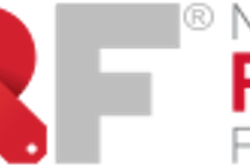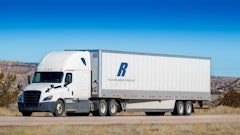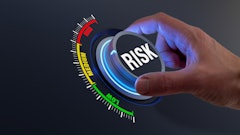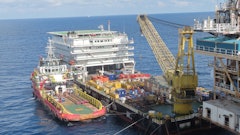
Digital technology’s importance continues to evolve in organizations across all industries, as C-level executives take a more direct role shaping and driving explicit strategies. Firms from industrial, retail and energy to financial and IT services are aggressively growing capabilities, exploiting data analytics, pursuing multi-channel opportunities and driving better experiences, sometimes even creating new revenue models. Digital technology growth also includes a proliferation of technology partners as niche and emerging technologies compete and complement traditional firms. With this evolution, procurement’s function is taking on a more strategic role as an enabler of revenue creation for new services, solutions and related offerings.
The procurement function is also significantly increasing in complexity, as key trends drive an expanded set of competencies. Procurement is required to service a growing global presence as investor pressures force firms to grow and diversify revenues. Additional geographies acquired via merger and acquisition (M&A) activity were the result of attractive opportunities to acquire competitors and provide discounted entries into new markets. And internal initiatives to drive cost efficiencies via shared services compounded complexities within the procurement function.
The net effect of global expansion and needing to manage an expanded portfolio of technology partners requires the procurement organization to transform into a key enabler that influences margins for revenue growth, manages velocity and risk for technology-based solutions, and becomes a collaborative partner and steward to the firm’s key business units. This is a significant shift from the traditional role of managing procurement costs and strategic sourcing decisions for the company.
Since procurement organizations are somewhere on the spectrum between frazzled (underfunded, under-resourced and overwhelmed in managing an explosion of transactions) and evolving (transforming procurement competencies to service a global business), five key tenets are discussed below for optimizing the procurement of technology globally. For anyone playing a leadership role transforming your procurement organization, using these tenants as a beacon can hopefully ease the journey.
1. Managing Supplier Risk to Fulfill Technologies for a Global Footprint—the Sourcing Matrix
Technology original equipment manufacturers (OEMs) are very important in driving new revenue and growth, so it’s vital to understand their physical supply chain, limitations and implications for your business. Key characteristics include:
- Use of traditional cost-effective manufacturing strategies for offshoring and contract manufacturing, which results in either sourcing from a few places around the globe or component assembly in one or a few countries.
- A configure-to-order supply chain model for technologies characterized by short product lifecycles and varied dynamic configurations, which results in longer-than-desired lead times and complexities for landing technologies. Orders to your procurement organization often only take place once technology is required, rarely in advance of need, therefore it’s never provided soon enough.
- Use of regional distributors as order aggregators since distributors can only cost- effectively hold stock for repeatable and predictable technologies.
- Limited, varied logistics and fulfillment capabilities to deliver technologies through customs, whether it’s for three or 50 countries. Some countries can deliver technologies to your business, whether directly with the OEM or via a logistics partner. And in other scenarios, capabilities may exist only to get technologies to the border via a logistics partner.
Technology solutions are often multi-OEM, each with disparate supply chain models, so it’s vital to manage the in-bound logistics process, ensuring whom the importer of record is between your business (ideal), a channel partner or logistics provider, or the OEM (less than ideal). Using a sourcing matrix to mitigate risk, provide predictable costs and lead times, and confirm country-specific sourcing is vital to avoid costly delays.
2. Managing Complexities to Effectively Transact Globally—the Procurement System
Procuring technology globally has a very different set of challenges and characteristics than purchasing other discrete items. Key characteristics include:
- Technology purchases requiring IT architecture decisions, which are dynamic and custom to each project. Any supply chain, operations and possibly cost considerations are secondary, requiring procurement to derive solutions for global sourcing. This is compounded by the fact that, often, solutions to derive new revenue are multi-vendor so the challenge can span three, four or more OEMs.
- Technologies that can be highly configurable and have short lifecycles due to software versioning. Delays in up-front architecture design and permutations of solutions result in the need to refine or revalidate configuration and pricing in the downstream requisition and procurement process.
- Deriving pricing, which is a challenge as the basic OEM price list is only a starting point, providing part numbers, descriptions, list price and discounts. Consideration for landed costs, currency fluctuations, services pricing and other considerations is very challenging for a global footprint.
- Technology OEMs pursuing new consumption models that are service-, software- and solution-based, further driving complexity for procuring technology.
Typically, adding to the above considerations, your journey for mainstream adoption of an e-procurement platform is a work in progress, where major markets have adopted and minor markets remain a challenge. The ability for an e-procurement platform to cater for large, complex multi-line-item bills of materials is not common, often where a configuration can be five, 10, 20 or more line items. Key to ensuring your ability to effectively transact/procure on a global basis is expanding a procurement system that is conducive to configuration and dynamic pricing, foreign exchange, landed costs for varied transaction models, and workflow and collaboration with business unit partners to procurement.
3. Providing Transaction Transparency and Coordination of Downstream Activities
Procuring technology likely has downstream implications for setup, testing and installation services to enable new revenue opportunities. Since a procurement order with an OEM/supplier can likely result in multiple shipments, procurement inherits responsibility to track multiple ship-sets, possibly from multiple OEMs, and tie these orders to estimated times of arrival (ETAs) to coordinate downstream activities for scarce and costly technology services.
It’s imperative that procurement either include transparency in order tracking as part of the e-procurement system or in tandem with it, typically via a synergistic portal. This is critical as the procurement function becomes the implied steward to service revenue solutions for company business units and must also coordinate downstream services to bring technology solutions online. Coupled with order tracking, serial numbers and other asset attributes should be captured for optimal asset lifecycle management.
4. Mitigating Tax Exposure and Regulatory Compliance Is Vital for Optimizing Margin
Complying with country-specific duties and taxes, and avoiding customs delays is an additional challenge. Managing that challenge just became more important for revenue-generating solutions, as it now drives a key component for margin contribution. Landed cost can be 30 percent or higher than the overall cost for technologies. This is compounded by the fact that they’re dynamic based on the combination of order from, delivery to, sourced from and funds exchanged.
Country-specific regulations consist of requirements that the procurement organization must understand. Examples include:
- Many countries require transactions take place in local currencies to ensure the right duties are applied as opposed to the desire to use a stable base currency and fund procurement via a central budget. (Examples include China, India, Indonesia, Malaysia, Korea and Taiwan.)
- Use of the right valid accounting transactions (VAT) tax can vary. For example, China has one rate for services (6 percent), and another (17 percent) for the combination of technology and services. Japan has a unique consumption tax of 8 percent. Brazil, India, Nigeria and China have some of the most complex tax structures in the world for procurement.
- In India, taxes for importation of technology by a company without a presence in India can be significantly less (23 percent).
- In addition to broad regulatory requirements, customs duties and fees are always changing at a country level (both fee structures and rates). One example is the unique duties required for import into China for products with security software. (Adding to the challenge is most OEMs lack the required codes used by customs to classify and apply duties.)
Key to mitigating scale and complexity of taxes and regulatory requirements is managing a transaction model that optimizes costs and risks. Based on the combination of order from, ship to, source from and invoice to, procurement must define a preferred transaction flow by OEM/technology. Transaction models include local-to-local, centralized drop-ship and others.
5. Reconciling Standardization, Global Contracts and Conflict with Global Complexities
Global procurement’s aspirations to simplify and standardize how to transact are met with constraints and limitations that often result in operational challenges. The most common example is that negotiations with a technology OEM would ideally be based on a standard set of pricing (discounts) from a single price list. Yet the OEM technology most often has pricing that is by regional theater to cater for market-specific pricing, unique landed costs, foreign exchange and market-specific offerings.
Other areas that challenge the ability to execute against a standard global contract are regional nuances in physical supply chain and implications on landed costs, plus unique regulatory constraints, mentioned previously. The net of this topic is that the procurement organization must become a steward of how to optimize business on a global level for global technologies.
Michael Brown is the general manager of global procurement and logistics at global information and communications technologies (ICT) services provider Dimension Data.


















